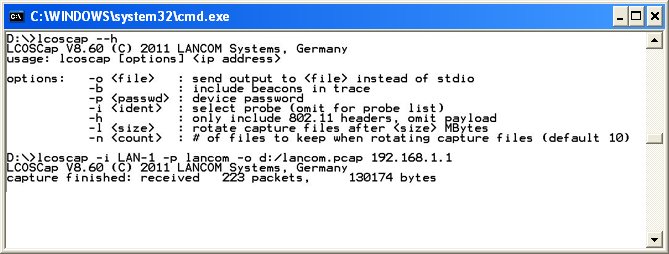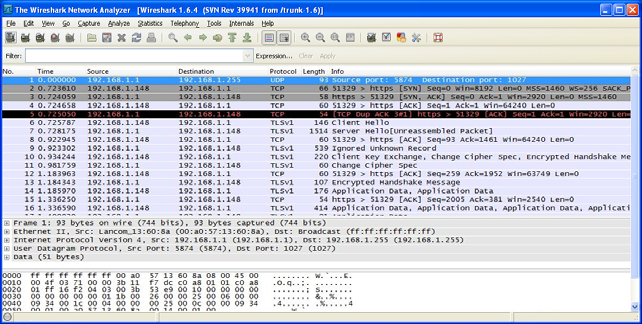With "LCOSCAP" you have the option to capture and store data traffic in a format compatible with Wireshark. You operate "LCOSCAP" from the command line interface by appending the appropriate parameters.
The following parameters control LCOSCAP:
- -o
- Target file containing the captured data.
- -p
- Password of the device for which LCOSCAP captures the data.
- -i
- Interface of the device for which LCOSCAP captures the data.Note: If you omit the -i parameter, LCOSCAP outputs the device's interface list.
- -b
- Switch to include the beacons in the data traffic (WLAN only).
- -h
- Switch to include the 802.11 headers, although without payload (WLAN only).
- -l
- Specifies the maximum size of the capture file. If the specified value is reached, LCOSCAP creates a new file. The files are given sequential numbers.
- -n
- Specifies the number of files produced by LCOSCAP. If the maximum number of files is reached, LCOSCAP overwrites the first file.
- --h
- With LCOSCAP --h you invoke LCOSCAP's Help function.
Enter the following command to record the data traffic for a device:
LCOSCAP -i LAN-1 -p lancom -o d:\lancom.pcap 192.168.1.1
- The device in this example has the IP address "192.168.1.1".
- The password is "lancom".
- You are recording the data traffic on the interface "LAN-1".
- File name and location are d:/lancom.pcap.Use the keyboard shortcut Ctrl + C to stop the recording.

For the analysis, open the file generated by LCOSCAP with "Wireshark".

